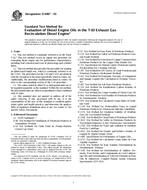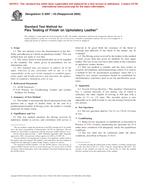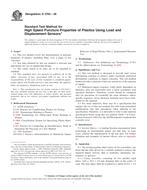1.1 This guide covers the documentation and general procedures necessary to plan and conduct a geophysical log program as commonly applied to geologic, engineering, ground-water, and environmental (hereafter referred to as geotechnical) investigations. It is not intended to describe the specific or standard procedures for running each type of geophysical log and is limited to measurements in a single borehole. It is anticipated that standard guides will be developed for specific methods subsequent to this guide.
1.2 Surface or shallow-depth nuclear gages for measuring water content or soil density (that is, those typically thought of as construction quality assurance devices), measurements while drilling (MWD), cone penetrometer tests, and logging for petroleum or minerals are excluded.
1.3 Borehole geophysical techniques yield direct and indirect measurements with depth of the (1) physical and chemical properties of the rock matrix and fluid around the borehole, (2) fluid contained in the borehole, and ( 3) construction of the borehole.
1.4 To obtain detailed information on operating methods, publications (for example,
1.5 This guide provides an overview of the following: (1) the uses of single borehole geophysical methods, (2) general logging procedures, ( 3) documentation, (4) calibration, and (5) factors that can affect the quality of borehole geophysical logs and their subsequent interpretation. Log interpretation is very important, but specific methods are too diverse to be described in this guide.
1.6 Logging procedures must be adapted to meet the needs of a wide range of applications and stated in general terms so that flexibility or innovation are not suppressed.
1.7 This standard does not purport to address all of the safety and liability concerns, if any, (for example, lost or lodged probes and radioactive sources
1.8 This guide offers an organized collection of information or a series of options and does not recommend a specific course of action. This document cannot replace education or experience and should be used in conjunction with professional judgment. Not all aspects of this guide may be applicable in all circumstances. This ASTM standard is not intended to represent or replace the standard of care by which the adequacy of a given professional service must be judged, nor should this document be applied without consideration of a project’s many unique aspects. The word “Standard” in the title of this document means only that the document has been approved through the ASTM consensus process.
Product Details
- Published:
- 06/01/2005
- Number of Pages:
- 9
- File Size:
- 1 file , 140 KB
- Redline File Size:
- 2 files , 250 KB


